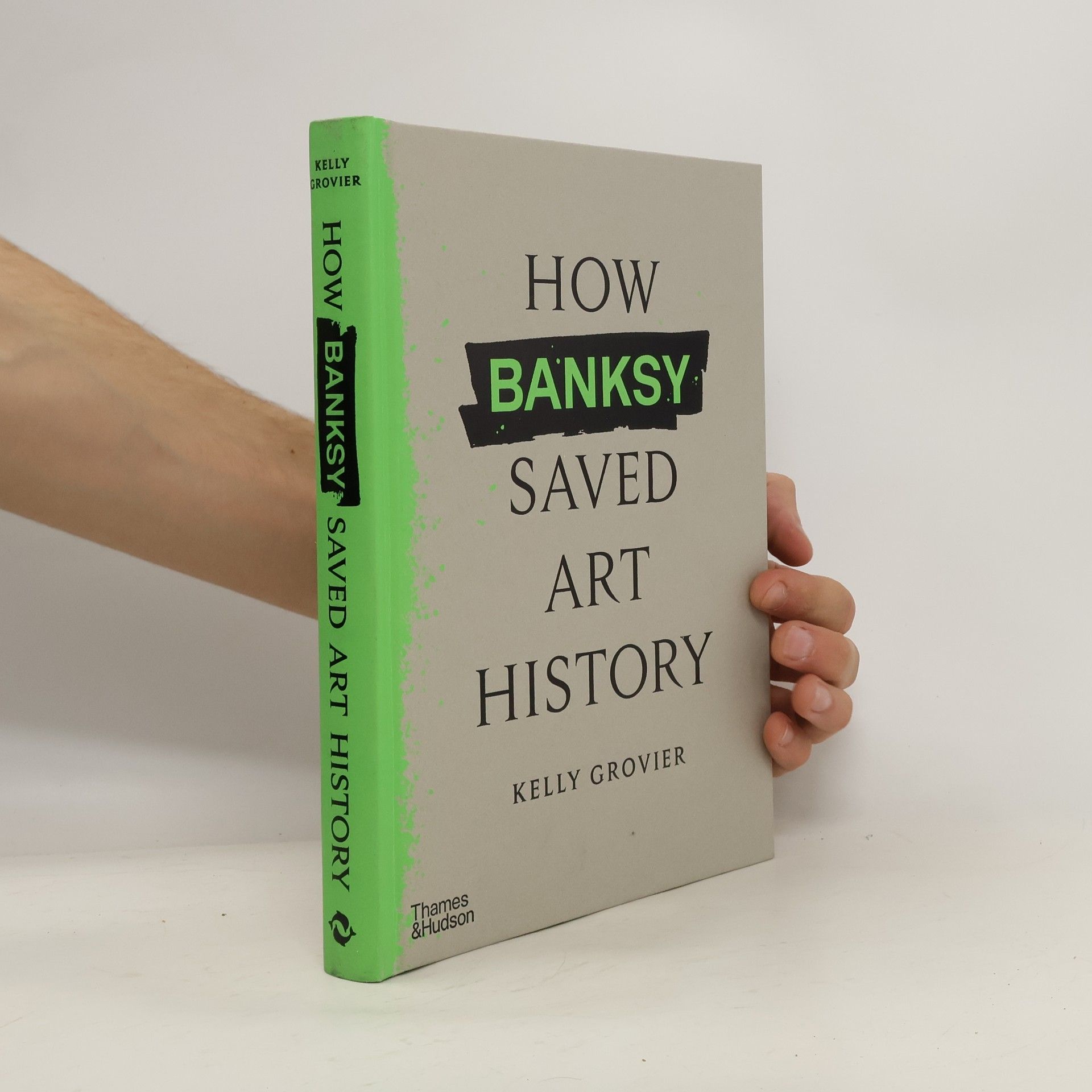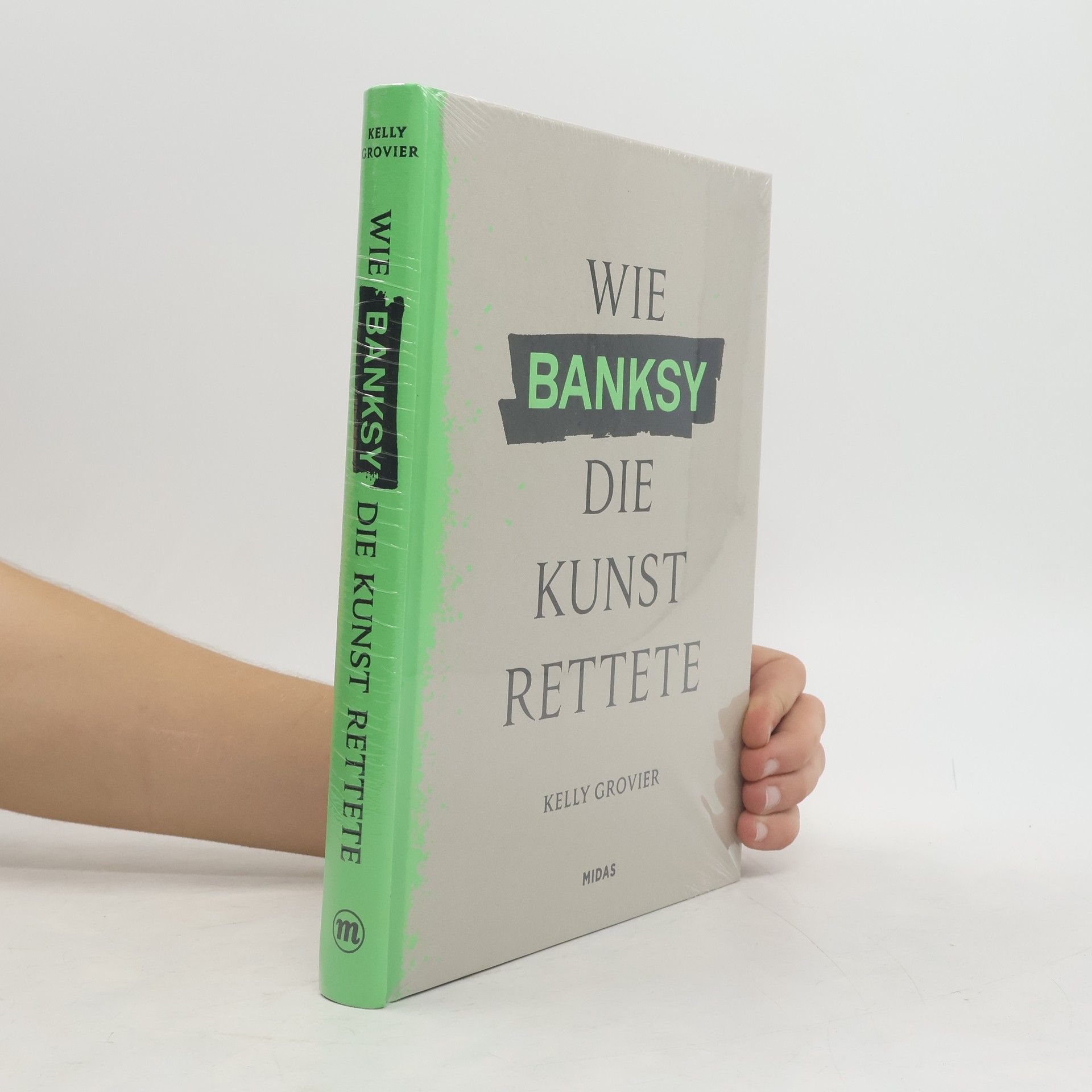Kelly Grovier Bücher






Der Fokus liegt auf einem innovativen Ansatz, der die Relevanz eines äußerst populären Künstlers beleuchtet und dessen Einfluss auf die zeitgenössische Kunstwahrnehmung untersucht. Das Buch bietet tiefgehende Einblicke in die Kunstwelt und regt zur Auseinandersetzung mit aktuellen Themen und Trends an, die durch das Werk des Künstlers geprägt sind.
On the Line
- 256 Seiten
- 9 Lesestunden
Sean Scully's paintings of brushy stripes and blocks of sumptuous colour are critically acclaimed and widely admired. Less well known is what a gifted storyteller and profound commentator on the history of art he is. In this fascinating book, the record of countless hours of conversations with Scully's friend, the art critic Kelly Grovier, the painter reflects on his extraordinary journey - from homelessness on the streets of Dublin in the mid-1940s to his current position as one of the most important abstract artists working today. In these revealing conversations, Scully recalls with poignancy and wit his rough-and-tumble childhood in London (where his family moved when he was a toddler), his tenacity in the face of rejection from nearly every art school in England, and his rise to prominence in New York in the 1980s. Illustrated throughout with images that capture both the artist and his work, this volume explores Scully's relationship with past masters, from Rembrandt to Rothko, and delves deep into his eventual rejection in the late 1970s of minimalism - the dominant force in abstract art at the time. Punctuated throughout by passionately recounted stories of struggle and loss, perseverance and triumph, the portrait that emerges from these pages is at once intimate and surprising. The book reflects the scope of Scully's broad interests and opinions, with segments devoted not only to his attitudes towards the art world and his most significant works, but also culture, politics and philosophy. Scully communicates with a raw pugnacity that is every bit as hard-hitting as his big brushstrokes
A new take on the history of art through the eyes of the international phenomenon that is Banksy.
From a carved mammoth tusk (c. 40,000 BCE) to Bosch’s Garden of Earthly Delights (1505–1510) to Duchamp’s Fountain (1917), a remarkable lexicon of astonishing imagery has imprinted itself onto the cultural consciousness of the past forty thousand years.Author Kelly Grovier devotes himself to illuminating these and more than fifty other seminal works in this radical new history of art. Stepping away from biography, style, and the chronology of “isms” that preoccupies most of art history, A New Way of Seeing invites interaction with art, learning from the artworks and not just about them. Grovier identifies that part of the artwork that bridges the divide between art and life and elevates its value beyond the visual to the vital. This book challenges the sensibility that conceives of artists as brands and the works they create as nothing more than material commodities to hoard, hide, and flip for profit.Lavishly illustrated with many of the most breathtaking and enduring artworks ever created, Grovier casts fresh light on these famous works by daring to isolate a single, often overlooked detail responsible for its greatness and power to move.
Art Since 1989
- 224 Seiten
- 8 Lesestunden
An extensive, accessible guide to the most groundbreaking and influential art from 1989 to the present The years since the collapse of the Berlin Wall in November 1989 have seen the rise of a new freedom to define art—Who makes it? Where can it be found? What is its commercial value?—and, consequently, the reevaluation of art’s place in society. Kelly Grovier surveys the dynamic developments in art practice worldwide since 1989, focusing on artists whose fresh visual vocabulary and innovation reflect these past turbulent decades. The book’s ten chapters examine the key themes in contemporary art—portraiture in the age of face transplants and facial recognition software, political activism, science, and religion, to name a few—by artists including Jeff Koons, Louise Bourgeois, Damien Hirst, George Condo, Marlene Dumas, Sean Scully, Cindy Sherman, Banksy, Ai Weiwei, Antony Gormley, Christo and Jean-Claude, Jenny Holzer, Chuck Close, and Cornelia Parker. A chapter-length timeline at the end of the book traces the evolution of art from 1989 to today by closely examining one key artwork from each year. Illustrated with the work of over 200 key artists, Art Since 1989 is a lucid and engaging look at what may prove to be one of the more tempestuous eras in human history, if not the history of art.
100 works of art that will define our age
- 320 Seiten
- 12 Lesestunden
Just as Picasso's 'Guernica' or Gericault's 'Raft of the Medusa' survive as powerful cultural documents of their time, there will be works from our own era that will endure for generations to come. But which ones? Which contemporary artworks best capture the zeitgeist of the late 20th and early 21st centuries? This book, written by one of the new voices in cultural criticism, predicts which artists and artworks from the past two decades will come to define our age through their power to question, provoke and inspire
"Invented by Stone Age cave-dwellers and medieval conjurers, cunning conmen and savvy scientists, the colours of art tell a riveting tale all their own. Over ten scintillating chapters, acclaimed author Kelly Grovier brings that tale vividly to life, revealing the astonishing backstories in the history of art. Interwoven between these chapters is a series of features focusing on key moments in the evolution of colour theory - from the revelations of the Enlightenment to the radicalism of the Bauhaus - while reproductions of more than 100 carefully selected artworks help illuminate the narrative's twists and turns. The history of colour is an epic saga of human ingenuity and insatiable desire. Read this book and you will never look at a work of art in the same way again" -- Provided by publisher
